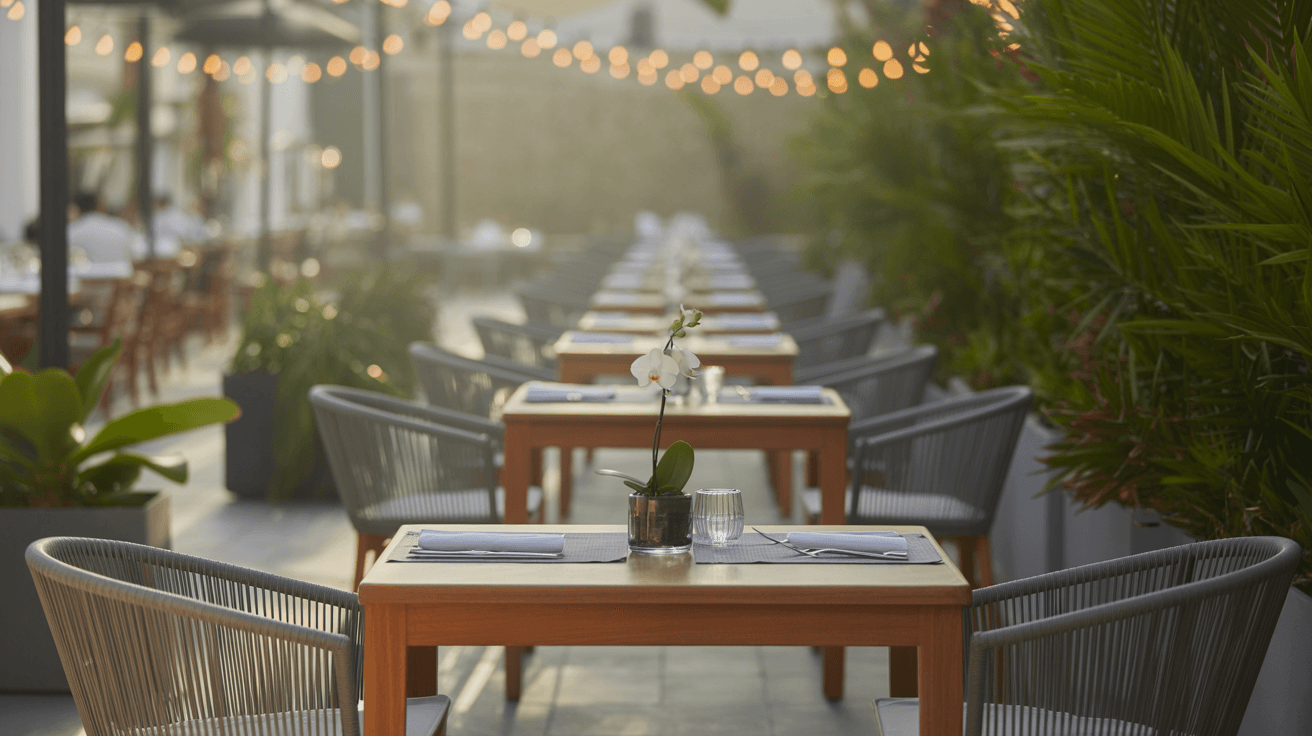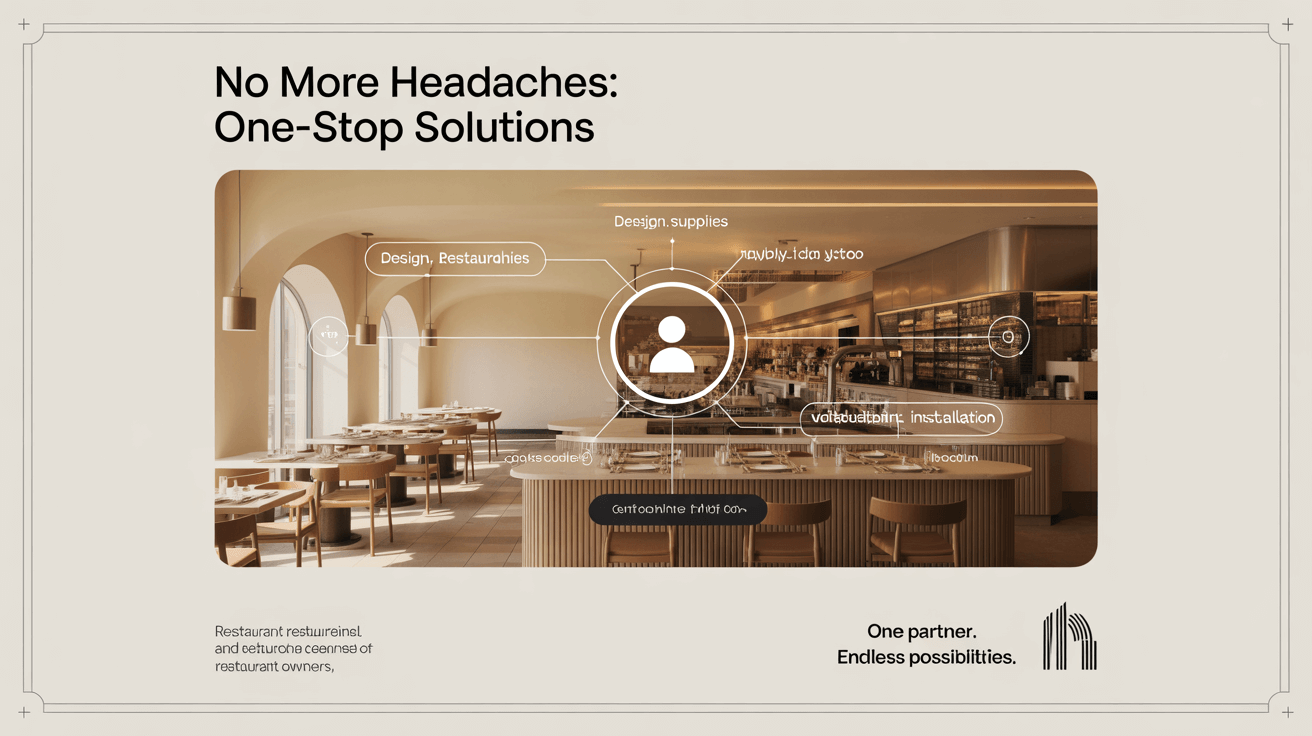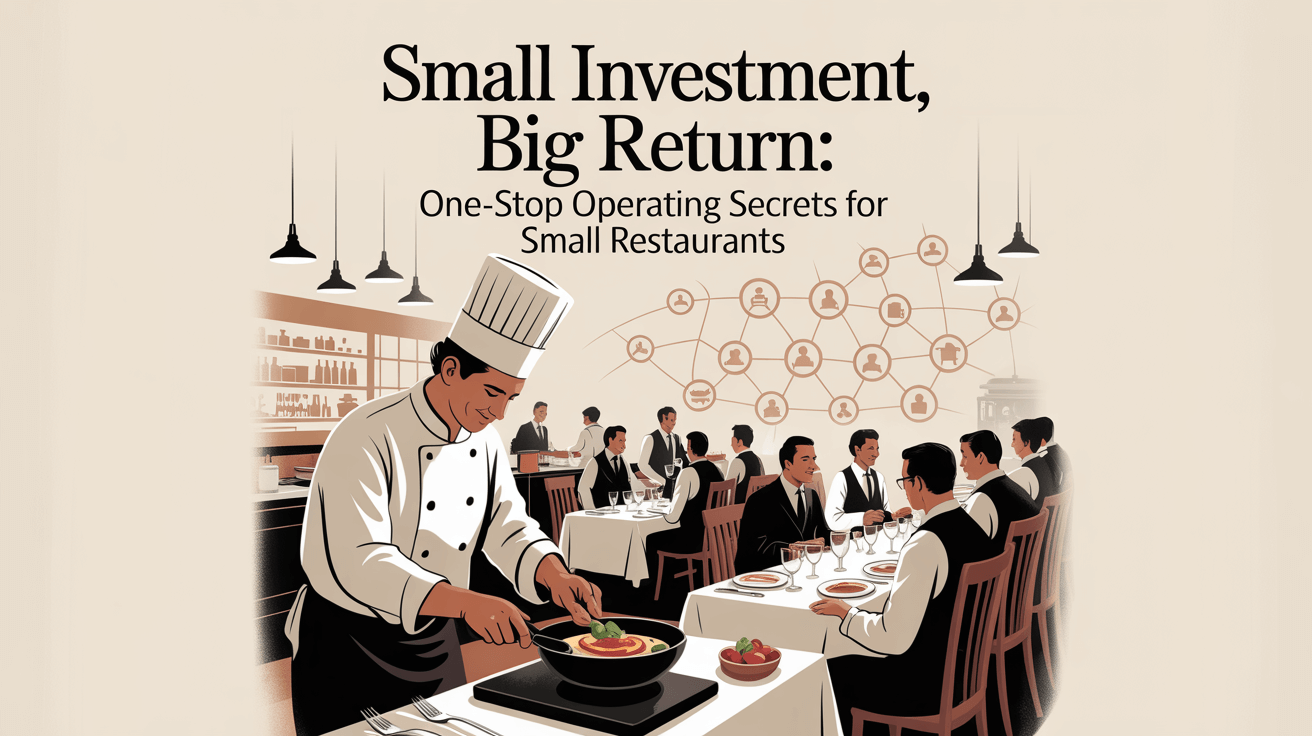Outdoor Restaurant Furniture: What to Know Before You Buy prepares you to select weatherproof, stylish pieces that endure the elements. But here’s the kicker… picking the wrong set means extra replace costs and unhappy guests.
1. Choose Weather-Resistant Materials
● Powder-coat aluminum frames resisting rust
● Teak or acacia woods with natural oils
● UV-stable, solution-dyed acrylic fabrics
● Recycled HDPE lumber for rot resistance
Ready for the good part? material choice defines lifespan outdoors.
| Material | Weather Feature | Maintenance |
|---|---|---|
| Aluminum | Corrosion-proof | Wipe clean |
| Teak Wood | Natural oil finish | Annual oiling |
2. Consider Climate and Sun Exposure
● Full-sun patios need UV-rated cushions
● Rainy regions require quick-dry foam cores
● Coastal sites demand salt-spray durability
● Windy spots benefit from weighted bases
What’s the real story? local climate dictates optimal choices.
3. Factor in Maintenance Requirements
● Rinse frames monthly to remove debris
● Re-oil hardwoods biannually for longevity
● Machine-wash cushion covers seasonally
● Inspect hardware quarterly for tightness
This is where it gets interesting… upkeep routines keep appearance fresh.
4. Prioritize Guest Comfort and Safety
● Slip-resistant seat surfaces under rain
● Ergonomic seat heights of 17″–19″
● Rounded table edges avoiding injuries
● Stable bases preventing tip-overs
But here’s the kicker… comfort and safety drive repeat visits.
| Feature | Benefit | Tip |
|---|---|---|
| Slip-Grip Seats | Guest security | Test when wet |
| Rounded Edges | Injury prevention | Smooth sanding |
5. Match Style to Brand Aesthetic
● Rustic wood sets for farm-to-table concepts
● Sleek metal frames for modern bistros
● Woven wicker for casual beach vibes
● Bold powder-coat hues for urban flair
Ready for the good part? style consistency strengthens branding.
6. Balance Weight and Portability
● Lightweight aluminum for easy reconfiguration
● Heavier teak benches for permanence
● Cast iron bases under umbrellas for stability
● Rolling carts doubling as mobile bars
What’s the real story? weight choices affect layout flexibility.
7. Plan for Seasonal Storage
● Stackable chairs nesting in racks
● Fold-down tables saving winter space
● Removable cushions stored indoors
● Cover systems protecting frames
This is where it gets interesting… smart storage extends furniture life.
| Storage Solution | Space Saved | Ease of Use |
|---|---|---|
| Nested Chairs | 50% floor area | Quick stacking |
| Fold-Down Tables | 75% footprint | Wall-mount hinges |
8. Check Warranty and Service Plans
● Frame warranties covering 3–5 years
● Fabric guarantees against fading and rot
● Replacement parts availability
● On-site repair or swap programs
But here’s the kicker… strong warranty cuts unexpected costs.
9. Evaluate Investment vs. Replacement Cost
● Upfront spend on premium materials pays off
● Budget sets need more frequent renewal
● Composite blends hitting sweet spot
● Total cost of ownership over years matters
Ready for the good part? lifecycle cost beats sticker shock.
10. Think About Accessories and Shade
● Umbrellas with vented crowns resisting wind
● Retractable awnings matched to furniture
● Side tables doubling as planter stands
● Built-in lighting options in frames
What’s the real story? accessories enhance functionality.
| Accessory | Function | Installation |
|---|---|---|
| Market Umbrella | Sunshade | Weighted base |
| Patio Planter | Divider + greenery | Slide-in sockets |
11. Account for Site Drainage and Flooring
● Slatted tabletops for water runoff
● Perforated metal seats shedding rain
● Raised decking under furniture
● Non-porous pavers for slip control
This is where it gets interesting… floor choice complements furniture design.
12. Factor in Storage and Delivery Logistics
● Module sizes fitting service doors
● Disassembled frames for compact transport
● Local vs. imported lead times
● Assembly support or self-install options
But here’s the kicker… delivery planning prevents project delays.
| Logistic Element | Detail | Benefit |
|---|---|---|
| Module Dimensions | <6′ per piece | Easy transport |
| Knock-down Frames | Flat pack shipping | Lower freight cost |
13. Incorporate Sustainable Options
● FSC-certified woods reducing deforestation
● Recycled plastics cutting landfill waste
● Low-VOC finishes improving air quality
● Biodegradable cushion cores emerging soon
Ready for the good part? green choices attract eco-conscious diners.
14. Test Samples Before Bulk Purchase
● Order one table and two chairs first
● Place in site conditions for 1–2 weeks
● Monitor fading, wobble, and comfort
● Adjust specs before full order
This is where it gets interesting… trial runs avoid large-scale mismatches.
15. Plan for Future Expansion
● Choose modular sets scalable by section
● Match new pieces to existing finishes
● Reserve spare parts for quick swaps
● Maintain design continuity
What’s the real story? scalable systems grow with demand.
Conclusion
Selecting outdoor furniture with an eye on materials, comfort, maintenance, and logistics ensures lasting patio experiences that impress guests and optimize your investment. Follow these guidelines to buy wisely and boost outdoor dining success.
FAQ
Q1: How often should I oil teak furniture?
Biannually, ideally before and after the rainy season.
Q2: Can I leave cushions outside overnight?
No—remove or cover them to prevent mold and UV damage.
Q3: What base weight prevents tipping?
Aim for 30–50 lb per table and umbrella base.
Q4: Are recycled-plastic chairs sturdy?
Yes—HDPE lumber resists rot, insects, and UV fading.
Q5: How long is a typical warranty?
Look for 3–5 years on frames and 1–2 years on fabrics.






